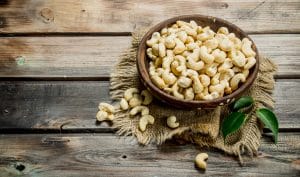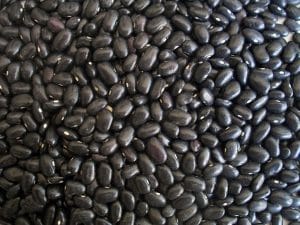Are Almonds Low FODMAP?
Important Note: When you buy through our links, we may earn a commission. As an Amazon Associate we earn from qualifying purchases. Content, pricing, offers and availability are subject to change at any time - more info.
Nuts about nuts? Nuts are natural energy boosters and a fantastic source of healthy fats, vitamins, antioxidants, and fiber. Additionally, nuts like almonds offer a wide range of uses other than a quick snack such as almond flour, butter, milk, oil, and extract. However, while some nuts are suitable for the low FODMAP diet, do almonds make the cut?
According to Monash University, a single serving of 20 almonds is high FODMAP due to the high fructan and GOS content. However, limiting almonds to half the serving suggestion (10 almonds) is considered suitable for a low FODMAP diet. Also, almond by-products can be enjoyed in moderation.
For many people with gastrointestinal disorders, consuming short-chain FODMAP carbs trigger rather painful and unwanted abdominal symptoms. So, let us deep-dive into the exact quantity of almonds and their by-products suitable for a low FODMAP diet.
- Are Almonds Low FODMAP?
- Is Almond Butter Low FODMAP?
- Is Almond Milk Low FODMAP?
- Is Almond Flour And Almond Meal Low FODMAP?
- Is Almond Oil Low FODMAP?
- Is Almond Extract Low FODMAP?
- Who Should Follow The Low FODMAP Diet?
- So, Are Almonds Low FODMAP?
Are Almonds Low FODMAP?

A typical single serving for most nuts is around 20 nuts or a half-cup.
The Monash University app makes use of a “stoplight” system, labeling FODMAP foods under the following category:
- Low FODMAPs — green light
- Medium FODMAPs — orange light
- High FODMAPs — red light
According to Monash University, 20 almonds are given the red light as high FODMAP foods due to the high galactooligosaccharides (GOS) and fructan content.
However, when they halve the average recommendation to 10 almonds, the FODMAPs present in the nuts are low enough to be given the green light as a low FODMAP food source. Still, anything exceeding ten almonds starts to range in the moderate FODMAP class. More so, fodmapfriendly.com also tested almonds and stated that a quarter cup of almonds is low FODMAP.
So, you can enjoy eating almonds on a low FODMAP diet, but you will want to pay close attention to the portions. Be sure not to exceed a quarter cup or ten almonds.
Furthermore, it’s vital to note that if you still struggle with uncomfortable IBS symptoms after consuming the recommended serving sizes of 10 almonds or less, it can be a result of the high levels of insoluble fiber that aggravates your gut problems.
More so, consider only reintroducing almonds into your diet during the reintroduction phase if you experience gut issues; this will allow you to know for sure if almonds are the culprit behind your IBS symptoms.
Is Almond Butter Low FODMAP?

Fortunately, you can enjoy almond butter as a low FODMAP in limited servings. You’ll want to limit almond butter to one tbsp or 1.13 oz per meal or snack to ensure it stays low FODMAP.
Anything exceeding one tbsp makes almond butter moderate in fructans and GOS, and more than 1.5 tbsp or 1.4 oz peanut makes almond butter a high FODMAP food source.
A tbsp of almond butter will work wonders in a low FODMAP smoothie or a low FODMAP protein bar.
Tip: give the low FODMAP protein bar recipe on cookgem.com a try, and replace the peanut butter with half the amount of almond butter.
Is Almond Milk Low FODMAP?

According to Monash University, almond milk is safe, low FODMAP in serving sizes of up to 8,45 fluid oz, approximately one cup.
You may be curious why you can enjoy as much as one cup of almond milk when large portions of almonds are high FODMAP. Well, the reason is that almond milk only contains around 2% of almonds while the main ingredient is water.
Nutritionally speaking, almond milk is fortified with calcium and healthy fat while offering a whole lot fewer calories in comparison to cow’s milk. More so, almond milk contains zero dairy or lactose, the short-chain FODMAP carbs that aggravate IBS symptoms.
So, as an alternative solution to daily milk, consider replacing it with almond milk. It will give a yummy, nutty flavor to your oats or smoothies.
Is Almond Flour And Almond Meal Low FODMAP?

Almond flour and meal are essentially the same product made from whole or blanched ground almonds; the primary difference is that almond flour is made from boiled, peeled almonds, whereas almond meal is made by grinding raw, unpeeled almonds.
Almond flour and almond meal follow similar low FODMAP portion sizes. Although the flour and meal get the red light as high FODMAPs at larger than ½ cup, you can use a ¼ cup or 0,85 oz of each per serving as low FODMAP.
So, you can safely add about one cup of flour or meal into a recipe as long as you ensure to divide the baked goods into at least four servings.
Both products are standard in gluten-free and low FODMAP baking since they dramatically improve the texture of the baked goods while adding moisture.
Is Almond Oil Low FODMAP?

FODMAPs are all specific, highly fermentable short-chain carbohydrates. So, because oils only consist of fats, they do not contain any carbs, making all pure oils, including almond oil, low FODMAP.
However, you’ll want to ensure that the oil does not contain any high FODMAP ingredients like garlic or onion.

Is Almond Extract Low FODMAP?
Almond extract is made using almond oil, water, and alcohol; it is common in baking goods or other foods to add an almond flavor.
While Monash University has not explicitly tested almond extract, it is made from almond oil that is FODMAP-free. More so, you only need a few drops in a recipe.
So, we can safely assume that minimal amounts of the almond extract are low FODMAP.
Who Should Follow The Low FODMAP Diet?
The low FODMAP diet is specifically developed for people suffering from gastrointestinal disorders like IBS to help alleviate uncomfortable and painful abdominal symptoms.
Many individuals with gastrointestinal disorders need to avoid foods with high FODMAPs. These short-chain carbs are poorly absorbed in the small intestine and typically trigger bloating, gas, abdominal pain, diarrhea, and constipation symptoms.
So, if you do not have IBS or a similar gut disorder, you can enjoy the standard recommended portions of high FODMAP foods as they still contain beneficial nutrients.
So, Are Almonds Low FODMAP?
Although almonds get the red light for the general recommendation of 20 nuts per serving, you can safely eat almonds and almond products as long as you adhere to the portion sizes.
Try to stick to ¼ cup or ten almonds per serving to prevent unwanted and dreadful IBS symptoms while benefiting from the healthy source of fats, vitamins, minerals, and fiber.
























